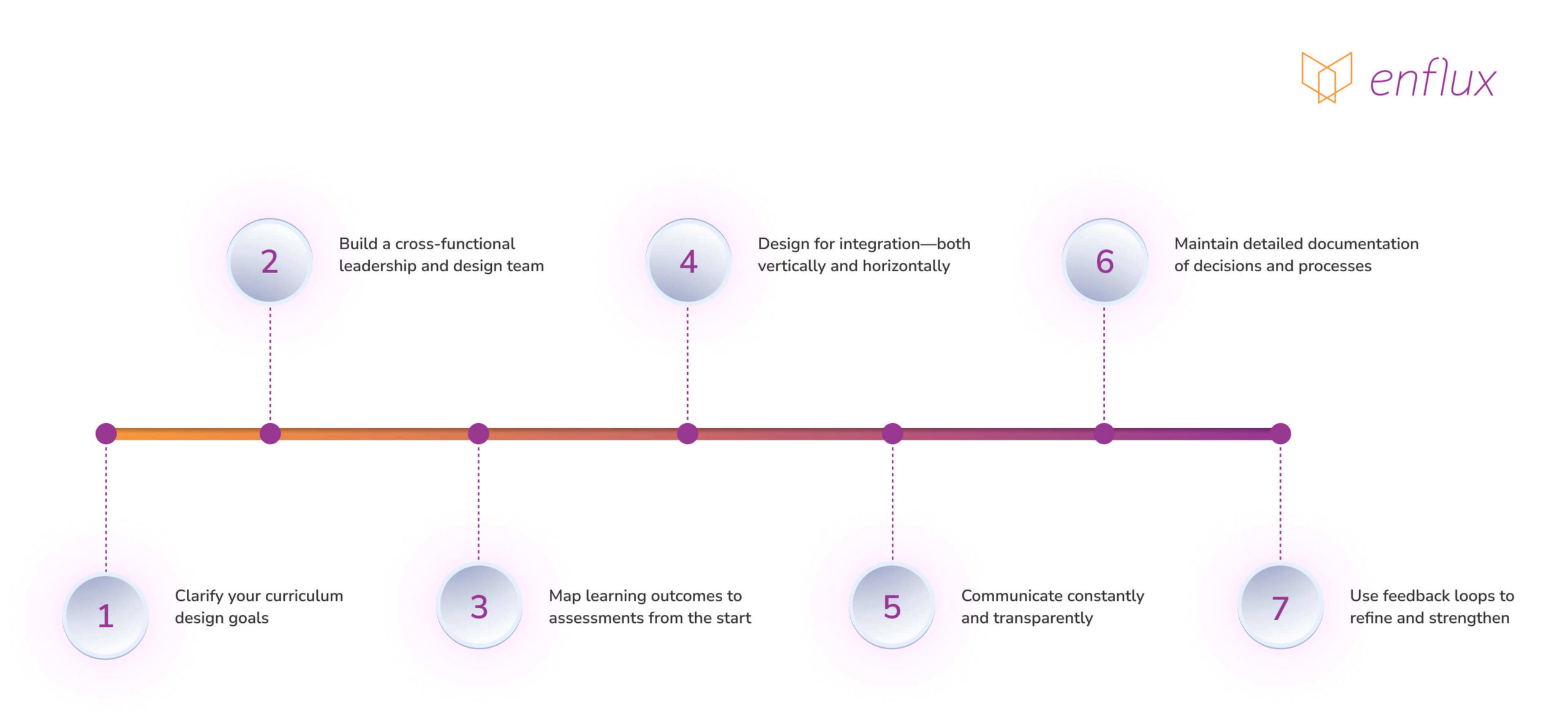
Curriculum Design Uncovered: Expert Strategies from Academic Innovators
In today’s rapidly evolving landscape of higher education, curriculum development is no longer optional—it’s mission-critical. As institutions adapt to changing student needs, accreditation standards, and workforce expectations, the key challenge is not whether to evolve, but how—and how fast.
To explore this challenge, we hosted a panel discussion with two innovative academic leaders:
- Dr. Erinne Kennedy, Assistant Dean of Curriculum and Integrated Learning at Kansas City University’s College of Dental Medicine
- Dr. Catherine Cone, Interim Dean and Associate Professor at Touro University College of Pharmacy
Together, they unpacked what it really takes to lead transformative curriculum redesign—and why a clear, evidence-driven strategy is more important than ever.
Why curriculum design can’t wait
Let’s face it—higher education has historically had a love affair with tradition. But clinging to legacy models of instruction is no longer viable.
“Curriculum isn’t static. It should evolve with both student needs and scientific advancement,” said Dr. Kennedy.
Both panelists emphasized that effective curriculum development requires intentionality and momentum—not just responding to external pressures, but proactively designing programs that are flexible, measurable, and relevant.
7 curriculum design strategies from the front lines
1. Start with ‘Why’—and make it loud and clear
Before jumping into structure, clarify the core purpose. Is the goal better student outcomes? More integration? Greater faculty collaboration?
“We anchored our efforts around a unified purpose,” said Dr. Cone. “This clarity not only guides decisions but also strengthens faculty buy-in.”
2. Build a dream team for curriculum management
Curriculum transformation is a team sport. Dr. Kennedy highlighted the importance of building a cross-functional group—including faculty, administrators, and support staff—to co-create the curriculum roadmap.
“We hosted collaborative design sessions,” Dr. Kennedy said. “It gave faculty ownership and generated real excitement.”
Avoid top-down mandates. Ownership drives engagement.
3. Align assessment with learning outcomes
Both panelists agreed: curriculum design must begin with assessment in mind. Dr. Cone described how her team redesigned assessments to match evolving learning goals.
“We didn’t just change content—we redefined how we measured mastery,” she explained.
4. Lean into integration
Siloed content is out. Integrated, competency-based education is in.
Dr. Kennedy shared how KCU implemented both vertical and horizontal integration—linking foundational science with clinical applications and embedding public health themes across the curriculum.
5. Communicate like your job depends on it
Change breeds uncertainty. Faculty support hinges on clear, transparent communication.
“People don’t resist change—they resist surprise,” said Dr. Kennedy. Frequent updates and feedback opportunities helped her team maintain trust during periods of rapid transformation.
6. Document everything (because accreditors are watching)
Curriculum changes without documentation don’t count. Dr. Cone recommended keeping detailed records of decisions, pilot results, and stakeholder feedback to prepare for accreditation reviews and internal CQI cycles.
7. Build feedback loops—and act on them
Ongoing curriculum management requires real-time data, student input, and faculty reflection. At both institutions, feedback was embedded into the design process—and used to adjust live courses and training.
These small iterations, or “micro-wins,” help maintain momentum.
A curriculum development playbook for academic leaders
If you’re leading or supporting curriculum transformation at your institution, here’s a distilled roadmap:

A final word (with a hint of wit)
Curriculum development isn’t for the faint of heart. It’s iterative, collaborative, and yes—sometimes political. But with the right tools and team, it’s one of the most meaningful ways to shape the future of education.
As Dr. Kennedy joked: “It’s like remodeling a house while you’re living in it… with five roommates… during a storm.”
But the payoff? A program that works better—for faculty, students, and accreditors alike.
Ready to rethink your curriculum?
Join the Enflux Assessment Academy
Start building smarter, more agile curriculum design strategies with Enflux
